#natural Cumin Seed Cumin Seed
Explore tagged Tumblr posts
Text

#Aromatic Cumin Seed Exporter#Aromatic Cumin Seed#Aromatic Cumin#natural Cumin Seed Cumin Seed#Cumin Seed Supplier#Aromatic jeera Exporter#Cumin Seed in Gujarat#Spices#Indian Masala#Exporter#Supplier#Gujarat#India
0 notes
Text

#Natural Aromatic Cumin Seeds#Aromatic Cumin Seeds#Cumin Seeds#Natural Cumin Seeds#Aromatic Cumin Seeds Supplier#Aromatic Cumin Seeds Exporter#Uttar Pradesh#Exporter#India
0 notes
Text
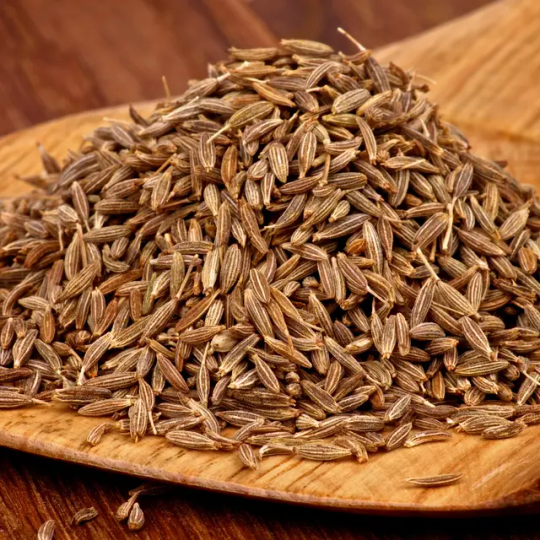
#Aromatic Cumin#Cumin#Organic Cumin#Organic Cumin seed#Natural Zeera#Warm spices#Spice#Aromatic Cumin Exporter#Organic Cumin Supplier#Organic Cumin Powder#Cumin Powder#Exporter#India
0 notes
Text
🌿 Kerala Naturals Winter Special Picks ❄️
Ebrace the season with warmth, health, and natural goodness! 🌟 Explore our handpicked winter essentials:

1️⃣ Dry Ginger Strong Coffee Powder – A bold, energizing blend to keep you warm: https://www.keralanaturals.com/product/strong-coffee-100g/ 2️⃣ Pathimukham / Sappan Wood – Traditional immunity-boosting herbal infusion: https://www.keralanaturals.com/product/pathimukham-100gm/ 3️⃣ Himalayan Pink Salt & Black Pepper Combo – A must-have for winter recipes: https://www.keralanaturals.com/product/himalayan-pink-rock-salt-black-pepper-combo/ 4️⃣ Raw Jackfruit Powder – A healthy flour substitute for guilt-free treats: https://www.keralanaturals.com/product/raw-green-jackfruit-flour-100-gm/ 5️⃣ Organic Raw Turmeric Powder – Boost your immunity with this golden spice: https://www.keralanaturals.com/product/organic-raw-turmeric-powder/ 6️⃣ Pure Wood-Pressed Coconut Oil – Nourish your skin and hair naturally: https://www.keralanaturals.com/product/woodpressed-coconut-oil/ 7️⃣ Kumkumadi Thailam – Brighten and moisturize your skin during the cold months: https://www.keralanaturals.com/product/kumkumadi-thailam-15-ml/ 8️⃣ Cold-Pressed Black Seed Oil – Strengthen your immunity and boost overall health: https://www.keralanaturals.com/product/black-seed-oil-100-ml/
✨ Keep your body warm, your immunity strong, and your skin radiant this winter with Kerala Naturals! ✨
#keralanaturals#natural#naturalproductsstore#kanannaturale#kerala#naturalfoods#natural pathimikam#black cumin seed#coconut oil
0 notes
Text
youtube
From its historical significance to its scientifically proven benefits, black cumin seed has captured the attention of health enthusiasts worldwide. Join us as we explore its remarkable properties and how it can enhance your overall well-being.
Black cumin seed, also known as Nigella sativa, has been used for centuries in traditional medicine systems across various cultures. Renowned for its potent medicinal properties, this tiny seed packs a powerful punch when it comes to promoting health and vitality. Throughout history, it has been revered for its ability to address a wide range of health concerns, from digestive issues to respiratory ailments.
In this enlightening video, we'll uncover the diverse array of health benefits associated with black cumin seed. From its anti-inflammatory properties to its potential role in supporting immune function, we'll explore the science behind its efficacy. Additionally, we'll discuss how black cumin seed oil, extracted from the seeds of the Nigella sativa plant, has become increasingly popular as a natural remedy for various health conditions. One of the most intriguing aspects of black cumin seed is its rich nutritional profile. Packed with essential fatty acids, vitamins, minerals, and antioxidants, this superfood offers a wide range of nutrients essential for optimal health.
We'll take a closer look at the nutritional composition of black cumin seed and how it can contribute to a balanced and vibrant lifestyle. Furthermore, we'll examine the role of black cumin seed in promoting cardiovascular health and supporting weight management goals. With its potential to regulate cholesterol levels, improve blood sugar control, and enhance metabolic function, black cumin seed has emerged as a promising ally in the fight against chronic diseases. But the benefits of black cumin seed extend beyond physical health. We'll explore its potential to support mental well-being and cognitive function, shedding light on its mood-stabilizing and neuroprotective properties. In an era marked by increasing stress and mental health challenges, the holistic benefits of black cumin seed offer a ray of hope for those seeking natural solutions to support emotional resilience and vitality.
In addition to its therapeutic properties, black cumin seed has garnered attention for its culinary versatility. We'll share creative ways to incorporate black cumin seed into your daily diet, from sprinkling it over salads to infusing it into smoothies and savory dishes. With its distinct flavor profile and aromatic essence, black cumin seed adds a unique twist to culinary creations while delivering a wealth of health benefits.
As we navigate the vast landscape of natural remedies and superfoods, black cumin seed stands out as a beacon of holistic healing and wellness. Whether you're seeking to enhance your physical vitality, support your mental clarity, or simply embrace a healthier lifestyle, black cumin seed offers a compelling solution rooted in ancient wisdom and modern science.
Find more Videos on YouTube: FoodieFlavorscape
#blackseed#black cumin seed#spices#natural remedies#nigella stevia#food facts#black cumin seed benefit#cooking#health and wellness#spice profiles#cooking tips#Youtube
0 notes
Video
youtube
RECEPT ZA DOMAĆE ULJE OD CRNOG KIMA
#youtube#black cumin seeds oil#black cumin#ulje crnog kima#ćurekotovo ulje#ulje ćurekota#prehlada#gripa#bolovi u mišićima#bolovi u noktima#imunitet#psorijaza#kosa#nokti#zdravlje#prirodna ulja#natural oil#holesterol#dijabetes#carcinom#covid19
0 notes
Text
Seed nutrition

https://seednutrition.com/dina994rain
#health#wellness#abundance#suplementos#natural body#natural supplement#supplements#immune system#antioxidants#cumin seeds#raspberry#chardonnay#seed oils#minerals#protein#detox#healthylifestyle#nutrition#healthy eating#nutrients#vitamins
1 note
·
View note
Text
keeper
730 words, no warnings, @dorlenemicroficprompts
“Morning, love.” Marlene heard Dorcas’s voice in front of her, just as she was mid-yawn with sleep sticking to her lashes.
Flushing in embarrassment, Marlene quickly shut her mouth and rubbed her eyes. “Um, hi,” she stuttered.
Dorcas smiled in amusement, “Happy Valentine’s,” and presented Marlene with a gift, to which Marlene gaped at her, mouth opening and closing as she decided on which thought to voice first.
Eventually, she settled on, “I fucking love you,” and threw her arms around Dorcas.
“Hmph,” Dorcas jumped in surprise, moving the gift out of the way and wrapping her other arm around Marlene. “Careful,” she mumbled into Marlene’s hair. “You’ll break the jar.”
Marlene withdrew from the hug with a raised eyebrow, hands still on Dorcas’s shoulders. “So I can’t hug you because you care more about a jar than me?”
Dorcas shrugged jokingly, lips curving upwards, “I mean, you forgot it was Valentine’s, didn’t you?”
Marlene spluttered indignantly, “No!” And then sheepishness took over her offence as she remembered, “Well, I mean… Valentine’s isn’t as important to me as you are and I think we should celebrate us everyday.” As an afterthought, she added, “Sorry for forgetting…”
“S’okay,” Dorcas shook her head fondly, pulling Marlene back into a hug. “I don’t think it’s important either, I just wanted to give you something funny.”
Marlene grinned, taking the jar from Dorcas. “I love it, and I will,” she laughed, eyes scanning the words, ‘EAT ME, HOT STUFF,’ written across a jar of harissa, a North African chilli pepper paste which Marlene adored. She remembered trying couscous at Dorcas’s house, and the Meadowes had mixed it with this extraordinary paste, hitting Marlene’s taste buds exquisitely, burning the back of her throat and leaving a herbal sensation sticking to her tongue, garlic and citrus and smoky pepper, a thick, smooth then crunchy texture between her teeth, cumin and coriander seeds bursting against the walls of her mouth, as if she were containing some fiery explosion within herself.
Dorcas’s mum had shown her how to make it, pounding the ingredients to a paste by hand, even allowing Marlene to try each ingredient on its own to see how the flavours came together. Then with Dorcas’s dad, Marlene had created several dishes all using their beloved harissa, a gift from mother nature and Earth, and now from Dorcas, her world.
“Thank you,” Marlene injected sincerity into every letter. She’d been missing harissa since the week she’d visited Dorcas over Christmas break, like she could feel it lingering in the air but just out of reach from her tongue. Harissa gave her the same kick that kissing Dorcas did, and that was really saying something. Oh, and kissing Dorcas after eating harissa! Best thing ever. Tasting her favourite food on the tongue of her lover.
Dorcas pressed a chaste kiss to Marlene’s lips, gone as soon as she was there, the soft whisper of, “Anything for you,” fading into the air. Marlene wanted to repeat the sentiment back to Dorcas, but then Dorcas was back to conversational, saying, “Your last class today is Arithmancy, right? I’ll meet you there,” Dorcas nodded with a wink, walking back to the Slytherin table as Marlene stared at her back in awe.
Dorcas had given her the best Valentine’s gift. Dorcas was the best. Dorcas remembered what class she had last. Dorcas was the best. Even though Dorcas’s last class was Potions, with quite a journey to Arithmancy, Dorcas was still meeting Marlene there. Dorcas was the best.
From beside her, having watched the whole interaction, Lily nudged Marlene. “She’s a keeper!” she whisper-yelled into Marlene’s ear with a sing-song lilt.
- - -
“Marlene!” Sirius squawked in horror. “Are you putting chilli paste onto your toast?!”
“Yup,” Marlene beamed, the entirety of her breakfast coated in a thick layer of harissa. She inhaled it blissfully, and smirked at Sirius, “Only people made of hot stuff can handle it.”
Sirius scowled, grumbling at his weak spice tolerance. “I am hot stuff,” he argued. “Remus gave me this for Valentine’s day.” He held up a scented candle with the words, ‘BLOW ME, HOT STUFF,’ written across it.
From the top of his cup of tea, Remus met Marlene’s eyes and smiled lightly, confirming that he and Dorcas collaborated over gift ideas. Marlene snorted, then almost choked on the burning sensation of harissa in her nostrils.
#marauders#dorlene#dorlene microfic#dorlene fic#dorlene fanfiction#marauders girls#dorcas meadowes#marlene mckinnon#dorcas x marlene#wolfstar#remus lupin#sirius black#remus x sirius#marauders fanfiction#marauders microfic
55 notes
·
View notes
Text
#Aromatic Cumin Seed Exporter#Aromatic Cumin Seed#Aromatic Cumin#natural Cumin Seed Cumin Seed#Cumin Seed Supplier#Aromatic jeera Exporter#Cumin Seed in Gujarat#Spices#Indian Masala#Exporter#Supplier#Gujarat#India
0 notes
Text
#Natural Aromatic Cumin Seeds#Aromatic Cumin Seeds#Cumin Seeds#Natural Cumin Seeds#Aromatic Cumin Seeds Supplier#Aromatic Cumin Seeds Exporter#Uttar Pradesh#Exporter#India
0 notes
Text
#Aromatic Cumin#Cumin#Organic Cumin#Organic Cumin seed#Natural Zeera#Warm spices#Spice#Aromatic Cumin Exporter#Organic Cumin Supplier#Organic Cumin Powder#Cumin Powder#Exporter#India
0 notes
Text
Breads of the World, K-L
Ka’ak: the name itself refers to several types of baked goods from the Arab world, but here, we’re talking about the dried, hardened, ring-shaped biscuit of wheat flour, veggie oil, eggs, sugar, black cumin, sesame seeds, water, and salt, originally from Syria. In the Levant, it’s coated in sesame seeds and leavened with fermented chickpeas. In Lebanon, the dough is rather sweet and rolled out to a rope, much like how a bagel is made. Tunisian Jews give us a sweet and salty rendition of the pastry, but it’s more of a quick bread, though. Egypt has a variation made with almonds served at weddings.
Kabkab: a very thin disc-shaped wafer of ground cassava/tapioca from the southern Philippines, and can be stored for long periods of time given the fact the finely mashed tubers are made into a paste and then dried out with the air of the sun. Needs to be deep-fried before eaten, though, otherwise I imagine it’d be like eating a piece of paper.
Kalach/Kolach: a sweet (or savory) braided wheat or rye bread coiled into a ring, made primarily for weddings, Christmas, or Easter in Central and Eastern Europe, with lore that is surprisingly vast: for example, in Belarus, it’s meant to symbolize future prosperity and served savory. In Hungary, it’s very similar to a brioche with its incorporation of milk and eggs, and eaten with ham during Easter: on All Saints’ Day, giving a kalács to beggars praying at a graveyard’s gates kept the dead from returning (because every culture has fried pies as well as ghosts).
Kalaallit Kaagiat: a sweet yeasted bread studded with raisins and adorned with whipped cream and berries, from—ready?—GREENLAND! Yes! It was like the one bread I could find from an otherwise more austere climate than Scandinavia, one that primarily bases its gastronomy around things like fish, seal, whale, and reindeer. I found the original recipe and am putting it under lock and key, seriously.
Kalai roti: a thick flatbread of lentil or rice flour found in northwestern Bangladesh and served with mashed vegetables or chutney. Apparently, you can be walking down the street and watch it being made right before your eyes, and the guys who makes it will love you forever if you try it piping hot with the chutney!
Kamir: a little round pancake of flour, butter, and eggs, and then maybe banana, strawberry, pineapple, jackfruit, cheese, or chocolate, from Java, Indonesia, eaten at breakfast. Who says you can’t have a decent breakfast in the tropics?
Karē pan: flaky dough wrapped around Japanese curry and then either deep-fried or baked. Not much to go about but it sounds like Japan’s version of a hush-puppy.
Khachapuri: leavened cheese-filled bread from Georgia, sometimes also filled with eggs. Probably dates back to the 12th century when Georgia underwent a renaissance of sorts (oldest producer of wine in the world, naturally, they’re going to give us an array of cheeses as well as breads), but it’s also been suggested that it could have been the precursor to a pizza, as the Romans pitched their tents there for a long time.
Khanom bueang: Thai crêpes, in a broad sense. In a more specific sense, these thin babies are often folded to resemble tacos but filled with meringue and topped with things like shredded coconut, fried eggs, or chopped scallions.
Khakhra: thin savory western Indian biscuits of mat beans, flour, and oil. Not much about the biscuit itself but mat beans are said to be drought resistant and therefore something to watch should something ever happen to our friend, the grain of wheat.
Khooba roti: a hard-outside, soft-inside thick flatbread of ghee and wheat flour that’s like a thicker version of chapati or roti—India just has it going on, man.
Khebz: Lebanese… tortillas, I guess you could call them?
Khubz: the Arabic word for bread—the oldest known bread was found out in the desert, in modern-day southern Syria and northern Jordan, and dates back 14,000 years: it was a flatbread made of several varieties of wild cereals.
Khubz mulaweh: a kind of puff pastry flatbread baked in a traditional tannur (clay oven) in Yemen (a similar bread, malawach, has been brought to Israel by Yemenite Jews fleeing persecution). Often eaten at breakfast on the weekends with ghee and honey.
Kifli: also known as a kipferl, kiflice, or kifle, a traditional yeasted bread roll of soft yeasted dough sliced into wedges and formed into a crescent, greatly inspired by the croissant, from Central Europe. Croissants are laminated pastry, while these are plain breads that are longer and thinner. Breads in a crescent shape are said to symbolize offerings to the moon goddess, Selene; they’re also said to resemble horns… as in devil horns. The kifli, or kipferl as it’s known in Austria, is said to have originated anywhere from 1227 to the 16th century from monasteries during Easter: at the time, Vienna was under siege by the Ottoman Empire so the crescent may have been a tongue-in-cheek response to the Turks.
Kisra: thin fermented flatbread from Chad, Sudan, South Sudan, Algeria, and parts of Uganda and Kenya, made from wheat or fermented sorghum. There are two kinds, kisra rhaheeefa, which is the bread and very similar to injera; and kisra aceda, which is like a porridge and paired with meat and vegetable stew known as mullah. Before Sudan was split in two, they estimate 18-27,000 tons of sorghum flour was consumed by way of kisra: sorghum is another ancient grain, and one that is very nutritious and packed with vitamins and minerals, and also quite good at making a sourdough starter.
Kitcha: an unleavened flatbread from Ethiopia and Eritrea of flour, water, and salt, cooked in a hot pan on one side until slightly crispy. It’s often eaten in a dish called kitcha fit-fit.
Komeko pan: Japanese French bread made with rice flour. I couldn’t find much about this one (will investigate more later), but I did find myself reading about komeko (rice flour) in how the French have found that when combined with wheat flour, you get a bread that’s nearly identical to the real thing but is gluten-free. We bakers are all about experimenting so it’ll be some time before we have a loaf that is completely rice flour, but it’s definitely in the cards.
Kulcha: the Persian word for disc-shaped leavened flatbread; in India, it’s used to describe any regular old English bread from when the British had colonial rule over the region. However, kulcha itself is a round flatbread from the Punjab region of India and Pakistan, and is not to be confused with naan or tandoori parantha, even though this happens often.
Laffa: Iraqi pita brought over to Israel from Iraqi Jews in the 1950s, and is often used to serve falafel, kebab, and shawarma, or to dip in hummus and matbucha, or served with shakshouka, or to make sabich (eggplant sandwich). The dough is made from flour, water, yeast, salt, sugar, and olive oil, kneaded and left to proof overnight, divided then left to proof a second time, then rolled out to a large, thin piece and then cooked in a wood-fired oven. Often finished with olive oil and za’atar, and the long proving process gives it a thick, chewy, almost lush texture.
Lagana: Greek flatbread traditionally unleavened for the Great Lent, but yeasted bread is becoming more common. Flat, oval, worked with the fingers and dotted with sesame seeds, other herbs, and olive oil; and you guessed it, the name itself gave way to the word “lasagna”.
Lahoh: spongy, flat, pancake-like, injera-ish flatbread from Somalia, Djibouti, Kenya, Ethiopia, Yemen, and Saudi Arabia. Another bread brought over to Israel from Yemenite Jews when they escaped persecution in Yemen, and is now quite popular in Eretz Israel. It’s prepared from a thick batter of sorghum, cornmeal, warm water, yeast, and a pinch of salt, and left to ferment overnight just in time for breakfast. In Somalia, they called it canjeero and also laxoox.
Lángos: Hungarian deep-fried flatbread which, in the past, was made of the scraps of another bread dough and then baked in a brick oven. The dough itself is basically pizza dough but it’s usually fried in oil; they’ll insist on adding sour cream, yoghurt, or mashed potatoes to give it more warmth. Other accompaniments are garlic, mushrooms, farmer’s cheese, eggplant, cabbage, kefir, scrambled eggs, confectioner’s sugar, and jam.
Laobing: unleavened flatbread from northern China, mostly Beijing, sometimes called a Chinese pancake. Can actually be the size of a pizza, but about one centimeter thick and pan fried. Most are plain, but some can be filled with scallions or brown sugar. It’s usually cut into slices and used as a staple, or stir-fried with meat and veggies.
Laufabrau: “leaf bread”, a traditional Icelandic flatbread eaten at Christmas. They’re round, very thin flat cakes that are about 6-8 inches across and decorated with leaf-like geometric patterns and very quickly pan-fried in hot tallow or oil. It’s found in bakeries, but also made at home, where everyone gets involved as part of the Christmastide.
Lavash: THE Middle Eastern flatbread (next to pita, of course), leavened and cooked on a griddle—although traditionally, it was baked in a tandoor. Often found in Armenia, Azerbaijan, Iran, and Turkey, although it’s found all over Western and Central Asia. It’s actually a part of UNESCO Representative List of Intangible Cultural Heritage of Humanity, said to be an expression of Armenian culture. It can be made with flour, water, yeast, sugar, and salt, but can also be unleavened by omitting sugar and yeast. It’s often topped with sesame seeds, poppy seeds, or both prior to baking.
Lefse: a very soft Norwegian flatbread of mashed potatoes, flour, butter, milk, cream, and occasionally, lard. One of those breads turned over with sticks, and there’s a special rolling pin with deep grooves made just to make them. Usually flavored with just butter and sugar, but also cinnamon, jelly, lingonberries, or a sweet cheese called gomme. Norwegian-Americans will accompany it with peanut butter and sugar, butter and brown sugar, butter and salt, or ham and eggs. Another accompaniment is good ol’ lutefisk.
Limpa: Swedish sweet rye bread, sweetened with brown sugar and molasses, and then spiced with anise, caraway, fennel, orange, raisins, and dark ale. Another Christmas bread but is often found in smörgåsbord at Christmas Eve and goes well with jams and cream cheese. Drink up!
Llonguet: a French bread roll from Brazil, Chile, and the Catalan countries, primarily Mallorca—in fact, Mallorca classifies it as something as a symbol of the island (even though I’m more familiar with the Chilean version, which is Marraqueta). Basic yeasted bread, but with a loose enough crumb to make sandwiches. From what I can gather (most of what I read about it is in Castilian Spanish, which is different from the Spanish I know), it’s one of those “mainstay” breads, in that a meal isn’t complete without it.
Luchi: deep-fried Indian and Bangladeshi flatbread made with maida (super-refined wheat found only in India) flour. A good staple for the times when rice is ritualistically prohibited, and paired with vegetarian dishes like aloor dum, or with mutton curry.
Lye roll: bread rolls immersed in a lye (baking soda + water) solution before baking. A specialty in Bavaria but all over Germany, as well as the Alsace region of France, Switzerland, and Austria. They can be shaped into that of a pretzel but can also be straight rolls, like hoagie rolls or dinner rolls. Can be covered in pretzel salt, baked cheese, or poppy and sesame seeds.
8 notes
·
View notes
Text
Wednesday Tea Time🍵🫖
Detoxifying herbal tea🌿
Here is a recipe for a detoxifying herbal tea made exclusively from herbs and natural products, easy to prepare at home. You can drink one to three cups a day, for a period that generally lasts from two weeks to a month.
Ingredients
Dandelion (also called dandelion), 20 g Peppermint 15 g Milk thistle (seeds) 15 g Turmeric 15 g Cumin 5 g
Preparation
Infuse the ingredients for 10 minutes in 100 ml of cold boiled water, then filter. You can add honey or maple syrup to sweeten it. The herbal tea is ready to drink.

14 notes
·
View notes
Text

As a result of being burdened by knowledge, and an indulgent inability to remain silent, I would like to discuss scent notes and perfumes that I associate with Childe in consideration of his nature and nurture. I’ll also likely be redoing the post in which I compared him to garnets (x) tomorrow; this is because that post was genuinely intended to be a skeleton and there are many details that were overlooked, both in regards to him and the stone itself, which feels like injustice twofold. Anywho, let’s begin.

For the purposes of this, I’ll first be tackling the elephant in the room. The official Tartaglia perfume, which was formulated by Primaniacs in collaboration with MiHoyo. I do not care for this perfume, I disagree with half of its the associations, and I will personally be disregarding it here onwards because I’m not legally prohibited from doing so.
It should be noted that aside from the “Tartaglia” name and face slapped onto this scent, it also mentions its association with the hydro element; I do not think it would be unreasonable to believe that this perfume can be seen to extend to the hydro element as a whole rather than be exclusive to him. This is the interpretation I choose to utilise.
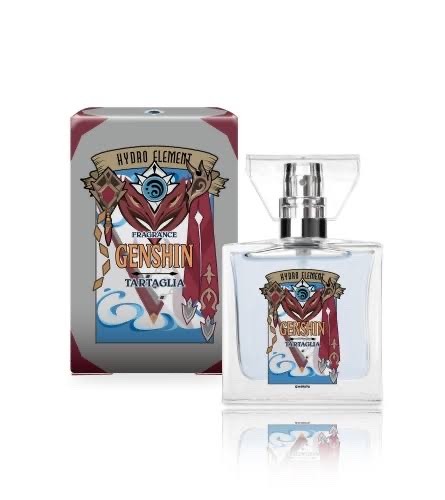
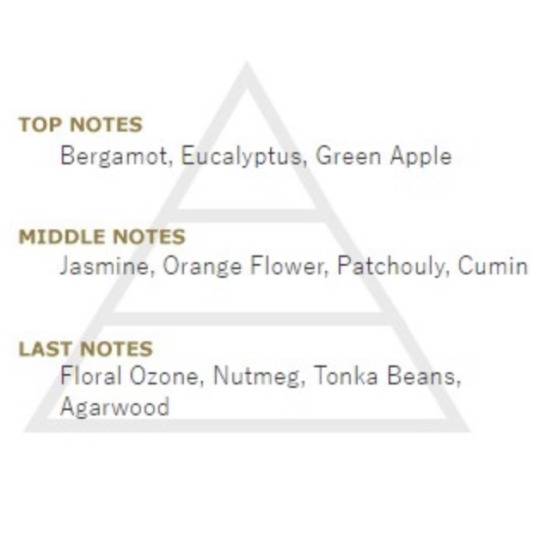
I will however state my (reluctant) agreement with few of the associated notes mentioned. Namely, Tonka Beans; Bergamot and Orange flower (mentioned together as they will be tackled in one go); Cumin and Nutmeg, and Agarwood.
Tonka Beans make sense on several grounds; firstly, they’re actually one of the most common ingredients in masculine brews (see: Giorgio Armani Black Code; Tom Ford Tobacco Vanille; Givenchy Givenchy Play Intense). Tonka creates a beautiful and comforting warmth in the scent; it’s quite similar to vanilla, but much… smokier, one may say. You’ll notice that a lot of the ingredient I focus on will have much to do with warmth. Historically, the seeds would be dried and soaked in rum for a certain amount of time in order to extract the scent, though artificial substitutes exist to offer the same result now.
Bergamot and Orange Flower are both citrus notes, though the former offers a much stronger one in comparison to the citrusy-floral amalgam that the latter offers. The reason I agree with these is that citrus notes are seen as quite common in aquatic scents as they recall the freshness of the sea breeze (see: Armani Giorgio Acqua Di Gio; Royall Lyme of Bermuda Royall Yacht; Czech & Speake Ausonia).
Cumin and Nutmeg are both spices, so one can imagine that they lead to a warm, comforting, and, well, spicy, scent. Remember how I said only a short while ago that warmth will be a prominent focus of mine? Exactly. No matter where he travels to, no matter where he goes, I’m quite certain he’d like a scent that reminds him of home; considering perfume etiquette requires one to wear fragrance according to the weather and occasion, I imagine warmer scents will be much more reminiscent of the contrasting, overbearing cold conditions that his nation offers.
Agarwood (the wood of Gods) — often interchangeable with oud in the fragrance world, despite both different— is such a deliciously warm and spicy note as well; it can be a bit overwhelming for some if it is found to be too heavy in a scent (which is quite common and rather easy to manage) but it can provide such a delicious base if handled right.
With these justifications done, I will now begin to write the notes that I personally associate with him.
I simply cannot deny the association of musk; another one of the most common notes found in perfumes. It’s warm, it’s soft and heavenly, it’s delicious. It is often seen as bringing a more primal, instinctual, and almost animalistic mood to the fragrance. This comes as no surprise considering it was historically obtained from male musk deers’ glands, even if we are now able to enjoy this scent artificially as well due to modern development and discoveries.
Speaking of animal origins and perfumes, did you know that whale vomit was traditionally a rather popular ingredient in perfumes? Ambergris is a substance that comes from the digestive system of sperm whales; it smells quite foul when fresh, as one would reasonably expect. It smells like faeces, actually. Again, as one would reasonably expect. However, it… becomes pleasant after drying down? Warm, musky. Ambrein is then extracted from the ambergris to be used in brews; rather, it is the quantity of of this alcohol that dictates the quality of the ambergris. It is still used, however due to issues with both cost and access it has been replaced with a synthetic counterpart for the most part, with notable exceptions. It also has a history of being used an aphrodisiac? But so has musk, so, such usage is quite common with animal-origin ingredients and notes, but I digress. It was just a fact I find somewhat curious.
Leather is a big one as well. Do I have much explanation for this? No. Leather scents can come in a wide variety, from smooth, cozy, suave and sensual, to rough, primal, smoky, and beastly. It mostly depends on what ingredients are being used and which notes are being aimed to replicate; the fragrance house of Memo, Paris is extraordinary at replicating different types of leather scents; they’re arguably my favourite when it comes to scents, actually. But either way, there is a kick to it; a spicy, warm, and intense presence that you cannot deny.
I would like to give special mention to saffron, tobacco, rum, gin, bourbon, amber (especially amber), vanilla, cardamom and other spices for bringing a similar warmth and comfort to their scents that I’m absolutely certain would suit him very well. Also vetiver, because it brings a woody delight to any fragrance it embraces.

Now comes the discussion of perfumes; arguably what I’m most excited for and the main reason that I wished to write this.
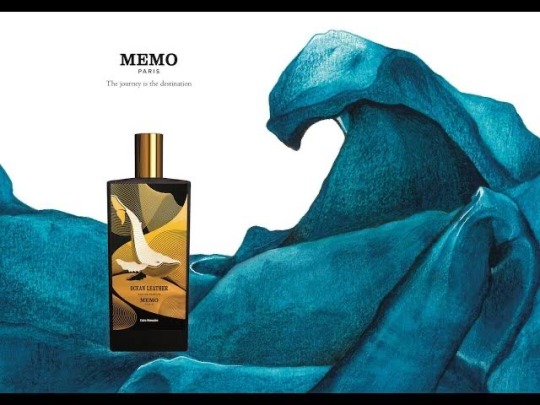
First off the list is Ocean Leather, by Memo, Paris.
Now, the official site claims it to comprise of Vetiver, Nutmeg, Cedar, Mandarin oil, Sage, and a leather accord. It also has basil and elemi, so I’m certain you can imagine how all of this together with the mandarin oil would offer you a truly citrusy, aquatic scent, combined the comfort of leather, nutmeg, vetiver and cedar. This, along with the gorgeous whale artwork, makes this almost perfect for him. Almost.
This is the only one in the list that I haven’t smelt myself (because somehow, much to my dismay, no stores seem to be carrying it) however, I’ve heard a lot of people review it to be more of a… clean scent? Which I feel doesn’t suit Ajax at all.
For the record, fragrances are often divided as being either clean scents, or dirty scents. Clean scents are those that are not overwhelming, these are scents containing light, refreshing notes. You should expect something like citrus-heavy, something that’s very suited to spring with light, fresh floral notes. Something you’d smell in a professional setting, in an office perhaps. It’s a mild, timid scent. And I do not think it suits Ajax in any sense of the way, whether you take into account his domestic life or his professional life.
Dirty scents are warm, musky; they’re heavy, they’re entrancing, they’re so deeply connected to the Earth. They feel like browns and reds, like clay. No matter which face of him you choose to assign a scent to, it’ll likely fall under this. Imagine the sweet and gentle atmosphere at home, where he and his siblings huddle together as he cherry-picks the details of the sights he witnessed adventures, ensuring to leave out all the parts unfit for the children to hear. Do you imagine him to smell like a bouquet? Or do you imagine him to smell like home itself? A smoky sweetness that shares the depth of the abyss as it mixes with his body’s chemistry?
Or, imagine him in the battlefield; would this man smell like spring? Or would he smell like a mix of iron, sweat, musk and leather? There you have your answer.
So I’m not all too sure about this fragrance simply because I don’t have a personal reference to go off of, and everyone that I know in real life, as well as every online forum I seem to run into, calls it very light. I even saw someone refer to it as an office-scent? He is not wearing a damn office scent. However, if the citrusy notes are at balance with the leather and nutmeg and it’s offering a conflicting, fresh yet potently warm fragrance? That suits him perfectly.
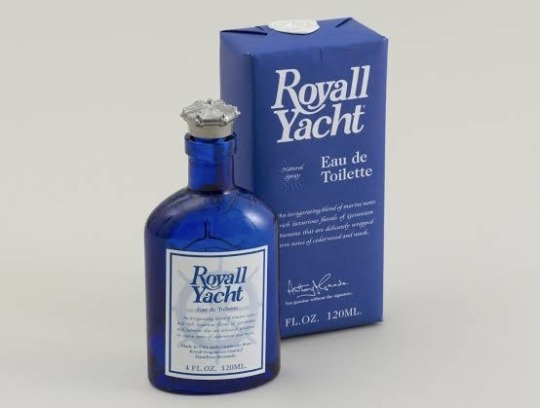
The second fragrance I’d like to discuss is Royall Yacht by Royall Lyme of Bermuda.
It is another aquatic fragrance and my goodness am I in love. It perfectly balances that need for aquatic accords through citrus and that need for warmth through the warmer notes. It has vetiver, lemon, cedar, musk, and amber (along with a few floral notes but they’re not the focus). Although reading off of the notes, one might imagine this to not be so strong in its aquatic mood due to the citrus being so limited, but reviews will prove otherwise. Most people state that it perfectly encapsulates the feeling of the lulling sea breeze as one sets sail. This does come with its own issue however, and that is the fact that this house in general (Royall) is not… particularly known or admired for the longevity of their fragrances. What I’m saying is that their fragrances don’t last very long at all. I say this from personal experience (due to owning a few fragrances) as well as online observation; perhaps an hour or two at most and then they are as good as gone, and that is if you’re not partaking in any strenuous activities that might make you break out in a sweat. I imagine this wouldn’t even last ten minutes on him, so I don’t, quite see a point in its purchase or wear for such an active man.
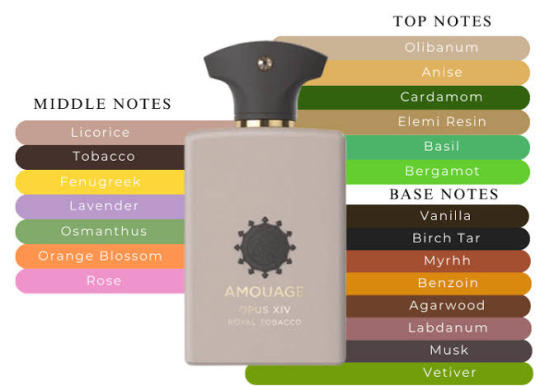
The third I’d like to discuss is Opus XIV Royal Tobacco, by Amouage.
The notes are within the picture above: we’re seeing cardamom, musk, vetiver, agarwood, osmanthus, tobacco, licorice, benzoin, bergamot: I’m sure that you can tell that we’ve left the aquatic scent category by now. Though bergamot is present to give a citrusy feel, it’ll most just heighten the intensity of the other notes rather than offer its own unique mood. It’ll be a very dark, carnal, spicy scent with a lot of depth and smokiness to it; perhaps not suited for Ajax, a gentle family-man, but certainly fitting for the 11th Harbinger. I adore the longevity of Amouage fragrances, they’re known for their gorgeous bottles and their interesting ingredient and note selection, and this perfume is no exception.
It is such a mouthwateringly delicious scent, I cannot stress this enough. Also, the handle is made to recall the image of a Khanjar in one’s mind; Khanjars are traditional Middle Eastern and South Asian blades in the shape, usually worn by men on the hip. They’re crafted in the shape of a ‘J’ and their handles are made from a variety of materials, including but not limited to bone (especially camel bone), gold, and silver.
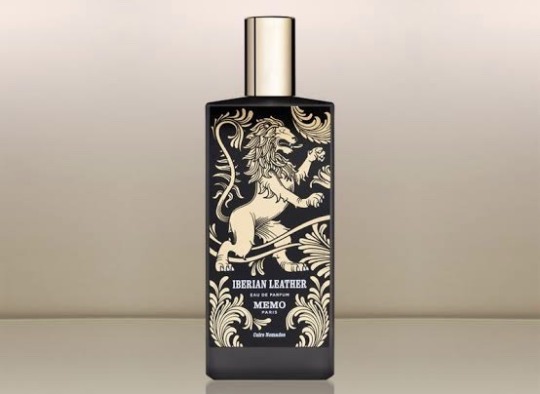
My last and most important association is that of Iberian Leather, by Memo, Paris.
This is such a beautiful winter fragrance; I actually got it not too long ago but I have been so deeply in love with it. It lacks aquatic accords but it has a spiciness that can handle his duality. This fragrance can provide that intimidating, overwhelming, animatic atmosphere but it can also surround one with that comforting, cozy urge to huddle in. I call it a winter fragrance because it is just that heavy and warm; although I’m personally not one to follow the etiquette of limiting scents to seasons as I prefer heavier scents all year round, people have noted this to be perfect for winter use both in real life/personal expedience, and in online discussion. Its notes include cedarwood, vetiver, agarwood, oakmoss, amber, musk, vanilla, osmanthus, cinnamon, bergamot, clove, saffron, sandalwood, and a few flower notes as well. So you’re once again getting that wooziness and that spice but you’re not getting the sweet and tender darkness of tobacco and licorice. It’s still intense and it’s still deeply layered in its scent profile but it’s not dark. It’s something that’ll suit him no matter the situation he is in or who he has in his company, and this is arguably one of the best scents to douse your winter coat in because it is so, comforting, so warm, so cozy. It is so earthen and natural. It feels like sitting next to a bonfire on a cold night. It feels like him. Not to mention, the longevity of this (or, the whole house, rather) is very impressive; you can apply it in the morning and it’ll still very much be on you when you sleep, even if barely. No matter how hot it is outside, how much you’ve been sweating, it will be on you, so help you god.
I would also like to give special mention to a few other perfumes that were close but fell short, such as Russian Leather Memo Paris; Giorgio Armani Acqua Di Gio; Giorgio Armani Black Code; Flåm Memo Paris; Vancleef & Arpels Ambré Imperial; Vancleef & Arpels Tonka Imperial, and more.
With all associations and justifications stated, I’d like to conclude this post by also mentioning what he smells like? A lot of people forget to take into consideration that no fragrance smells the same on everyone; it has a lot to do with your body chemistry (& natural body odour) as well as what you’re doing throughout the day. For example, on some people, floral notes tend to be more prominent, while on others, vanilla or more gourmand notes might appear more prominent instead. Although I can’t speculate much on which notes would be more prominent on him (vanilla; I want to say vanilla) I do feel like he’d smell like a mix of his chosen fragrance and iron. I feel like from being in battle all day, the scent would become… even more him, due to constantly mixing with his own sweat and body odour throughout the day, which then further combines with the unmistakably metallic scent of blood if business requires more extreme measures,
I will say however I imagine his fatui fur-collar cloak to smell like the most comforting thing in the world. I’ve noticed this to be quite common in winter clothing somehow, especially when you wear it quite commonly. One does not realise (and does not care, really) whether they have applied anything on it already and just about on their normal routine, spraying it over and over until it just… seemingly sets in, creating a scent so unique to the wearer because it now smells like them and the fragrance combined. It smells like home, it smells like all the memories of your past winters that you spent with those who love you. It smells like solace and relief and a happy ending and I think he deserves that bittersweet comfort of domestic nostalgia.

#tartaglia#childe#genshin impact#childe tartaglia ajax#I had to hold myself because because I was about to say something else in his personal scent section but I think I should head to bed.#✧.*🌹#✧.*🫀#✧.*🗡️
22 notes
·
View notes
Text
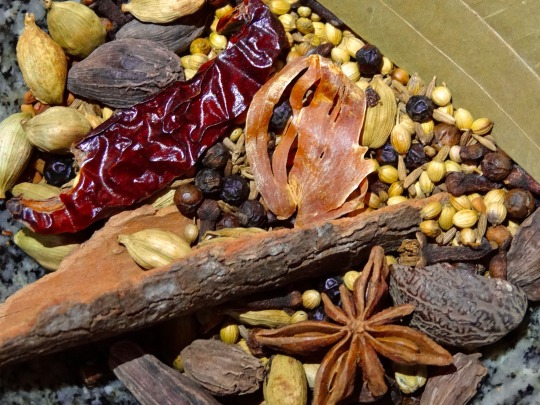
[ID: Close-up on whole spices including bark cinnamon, star anise, black cardamom, and mace in a granite mortar. End ID]
मीट मसाला / Meat masala (Nepali spice blend)
Nepali मीट मसाला or मिट मसाला ("mīṭ masālā" or "miṭ masālā," from "meat masala")—also called मटन मसाला ("maṭana masālā," "mutton spice blend")—is used to season various kinds of meat, but is especially common in marinades and sauces for lamb, as in खसीको मासु ("khasīko māsu," "lamb curry"). In Nepal, meat is usually eaten for parties or celebrations, on feast days—such as दसैँ (Dashain) and ईद अल-अधा (Eid al-Adha)—and on weekends.
Meat masala is sold as a commercial product to make home cooks' preparation of meat quicker and easier. In some recipes, the spice blend is not listed as a separate ingredient, but is hidden within the list and prepared fresh with each dish: depending on the cook, some of the spices will be left whole and fried in the cooking oil, and others will be toasted, ground, and added later.
Making your own meat masala gives you more control over the ingredients than buying commercially, and ensures a fresher product. Keep some in your pantry to add to meat preparations including curries, dumplings, and chatamari, and to use in marinades, sauces, and braises; or make a batch ahead of a festival and use it as the seasoning base for dishes you prepare over the course of the holidays.
Recipe under the cut!
Patreon | Paypal | Venmo
Ingredients
Spices for grinding
4 dried (3g) red chilis, or to taste (रातो खुर्सानी / rato khursani)
2 Tbsp (16.5g) cumin seeds (जीरा / jeera)
2 Tbsp (8.5g) coriander seeds (धनिया / dhaniya)
1 Tbsp (7g) green cardamom pods (सुकमेल / sukmel)
1 Tbsp (5g) black cardamom pods (अलैंची / elaichi)
1 Tbsp (8.5g) black peppercorns (मरिच / marich)
3-inch chunk (6.5g) Chinese cassia bark (दालचीनी क्यासिया / dalchini kyasiya)
1 tsp (2.5g) whole cloves (ल्वाङ / lwang)
1/2 head (2.5g) nutmeg (जायफल / jaiphal)
1 tsp (4.5g) fenugreek seeds (मेथी / methi)
1 tsp (2.5g) fennel seeds (सौंफ / saumph)
1 pod (1g) star anise (स्टार ऐनीज़)
1/2 tsp (1.5g) ground turmeric (बेसार / besar)
1/2 head (.3g) mace (जावित्री / javitri) (optional)
Look for cassia (cinnamon) bark that is rough and wood-like in appearance and does not curl naturally into quills: it may be labelled "cassia bark," "cinnamon stick flat," "desi cinnamon," or "dalchini flat" at a South Asian or halal grocery store.
Black cardamom pods may be labelled "kali elaichi" or "moti elaichi."
Spices for frying
2 medium (.7g total) tej patta (Nepal bay leaves) (तेजपात)
1 tsp (2g) ground ginger (अदुवा / adhuwa)
You may choose to leave out the spices for frying if you will be making a curry (and can fry them along with the rest of the aromatics). Include them for a preparation where the meat will not be fried in oil (e.g. momos, chatamari).
Instructions
1. Lightly crush nutmeg in a mortar and pestle to break in half. Crush cinnamon to break into a few pieces.
2. In a dry skillet over medium heat, roast chilis, black and green cardamom pods, and cinnamon until fragrant, stirring often. Set aside to cool.
3. Roast black peppercorns, cloves, and star anise for a couple minutes until fragrant. Set aside.
4. Roast smaller seeds (cumin, coriander, fenugreek, fennel), mace, and tej patta for a minute until fragrant. Set aside.
5. Remove skillet from heat. Toast turmeric and ginger for 30 seconds, stirring constantly.
6. Grind all spices together in a mortar and pestle or spice mill. Pass through a fine mesh sieve. Store in an airtight container in a cool place.
30 notes
·
View notes